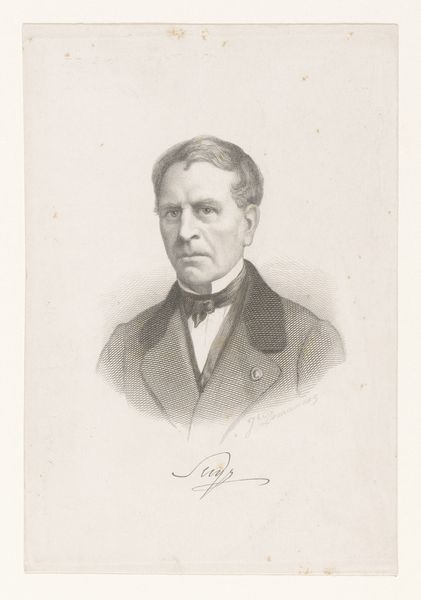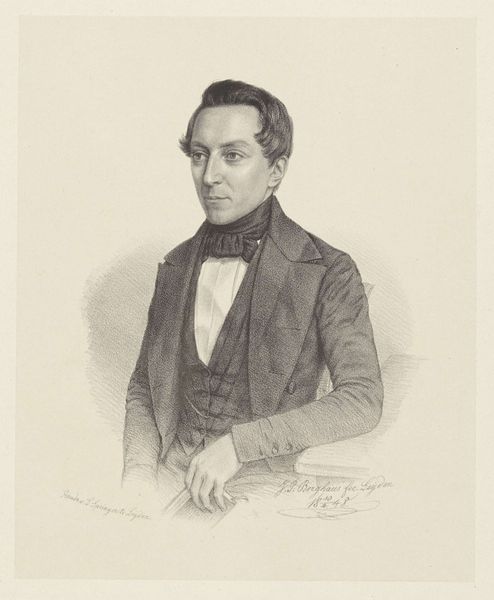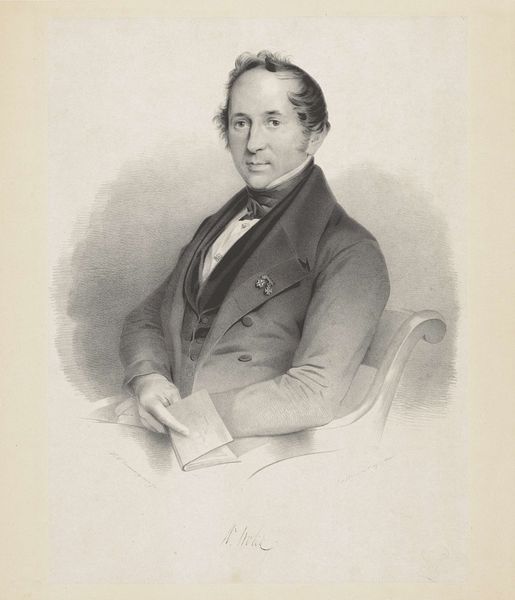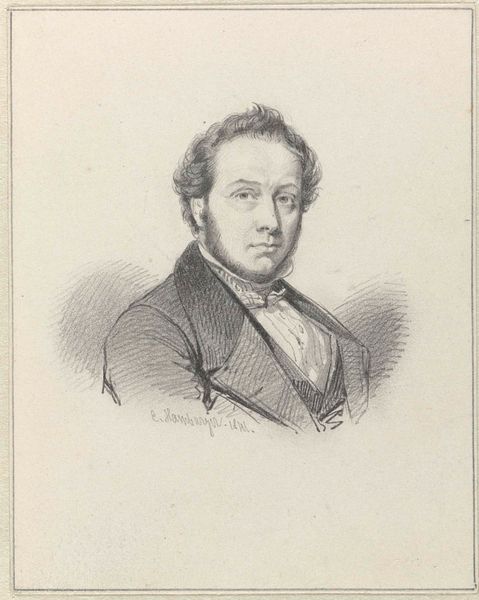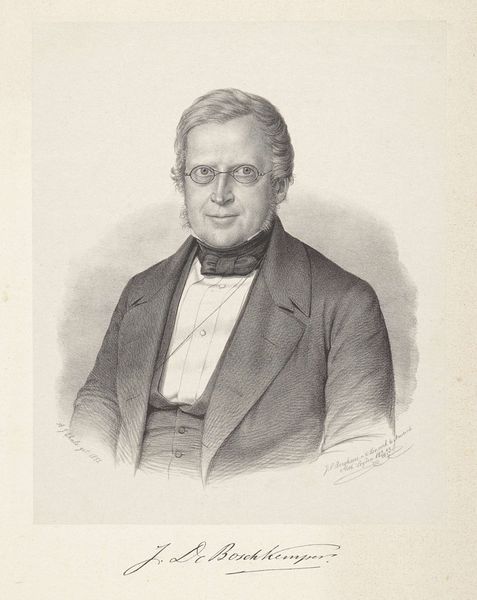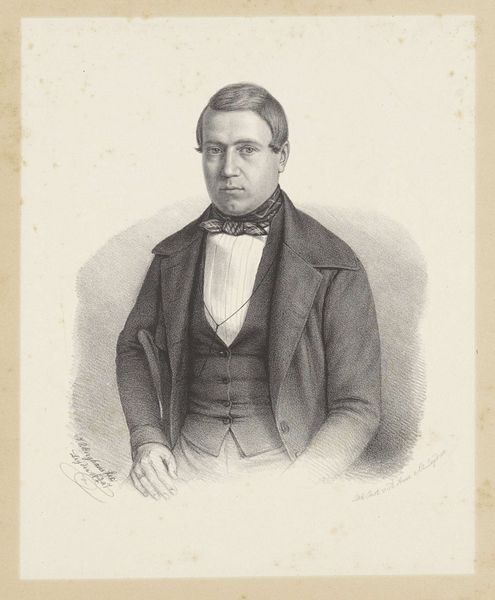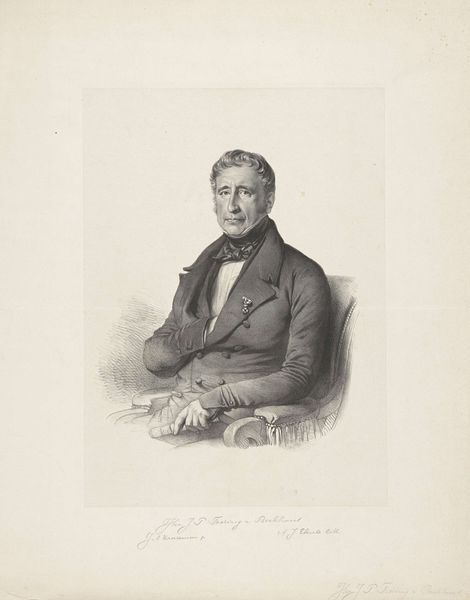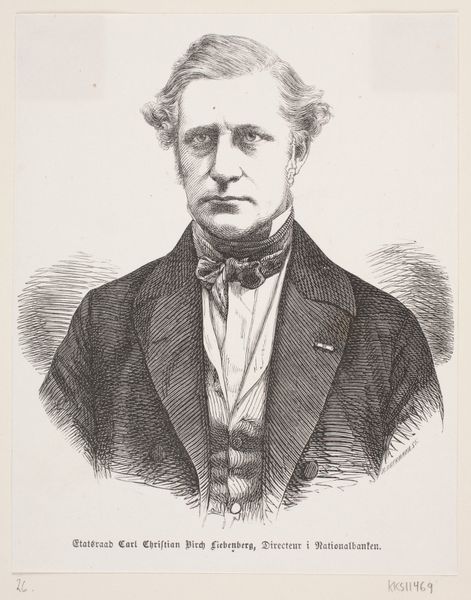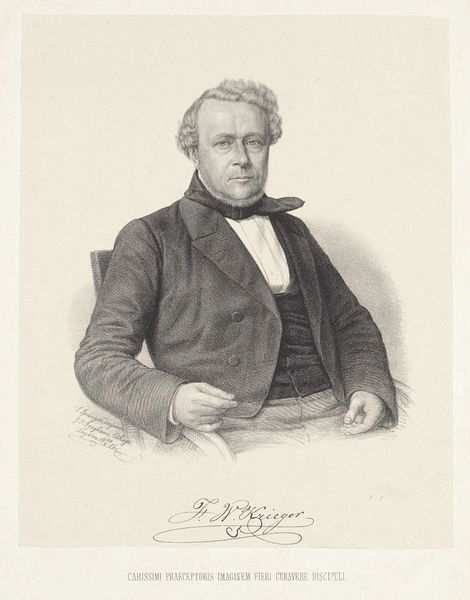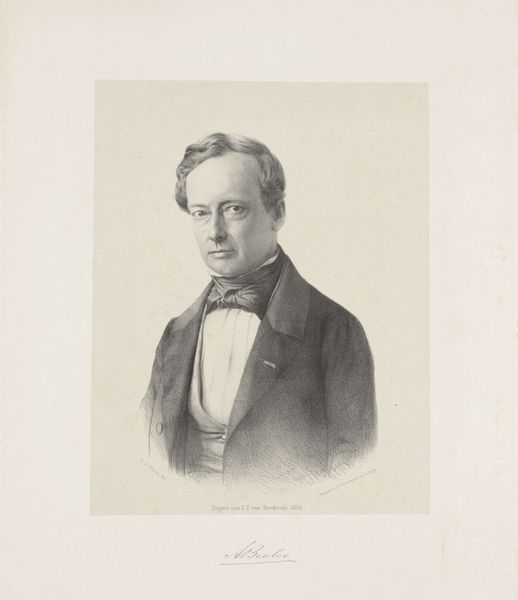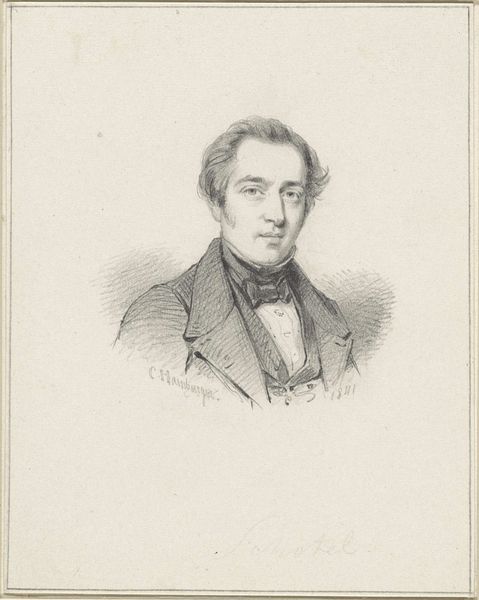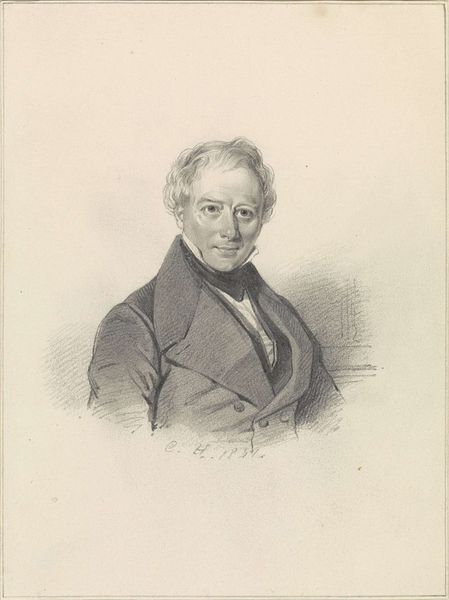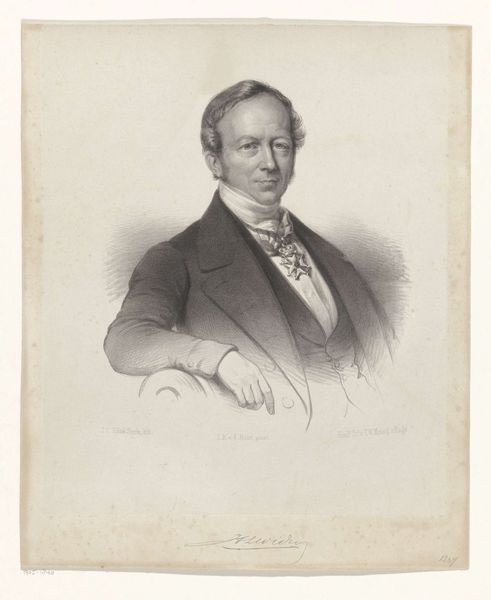
Portret van Anthony Hendrik Boon van der Mesch Possibly 1851 - 1852
0:00
0:00
johannpeterberghaus
Rijksmuseum
Dimensions: height 490 mm, width 317 mm
Copyright: Rijks Museum: Open Domain
Curator: Here we have a fascinating portrait, likely created between 1851 and 1852 by Johann Peter Berghaus. It's rendered in graphite, and titled 'Portret van Anthony Hendrik Boon van der Mesch.' What strikes you initially? Editor: There's a quiet authority in it, wouldn't you say? That steady gaze, the precise lines. I see someone anchored and very intentional; also maybe a hint of melancholia, as if he carries the weight of untold stories within. Curator: Portraits of this era were often strategic. Note the detail afforded to his attire. The perfectly tied bow, the fall of the jacket – sartorial signifiers denoting a certain societal standing. It's a Romanticized realism designed to communicate status. Editor: Indeed! He’s quite grounded but the details—like the slight fading of the image as we move down—creates a softening. Perhaps suggesting even the most established people exist on the precipice of the transient? Am I reading too much into the artist’s decision to focus the graphite towards the face? Curator: That's a brilliant observation, because Romanticism itself, as a movement, often explored the tensions between progress and decay, order and emotional rawness. And the book, or rather books, offer the idea of a man of academia, perhaps one versed in politics of the mind. Editor: Definitely. I'm captivated by how the artist creates depth solely through tonal shifts. It suggests layers beyond what we readily perceive. It’s quite elegant how the details of his face draw the eye in a delicate but intense fashion. It also contrasts well against the faded signature along the bottom edge of the portrait. Curator: He does present the archetype of the mid-19th century gentleman rather well. A lasting representation meant to outlive him and solidify the legacy in collective cultural memory. Editor: A memory captured elegantly. Leaving one to imagine and to question simultaneously. Well worth pausing with, wouldn't you agree? Curator: Precisely, it invites consideration on who dictates our memory. Perhaps ourselves or others.
Comments
No comments
Be the first to comment and join the conversation on the ultimate creative platform.
